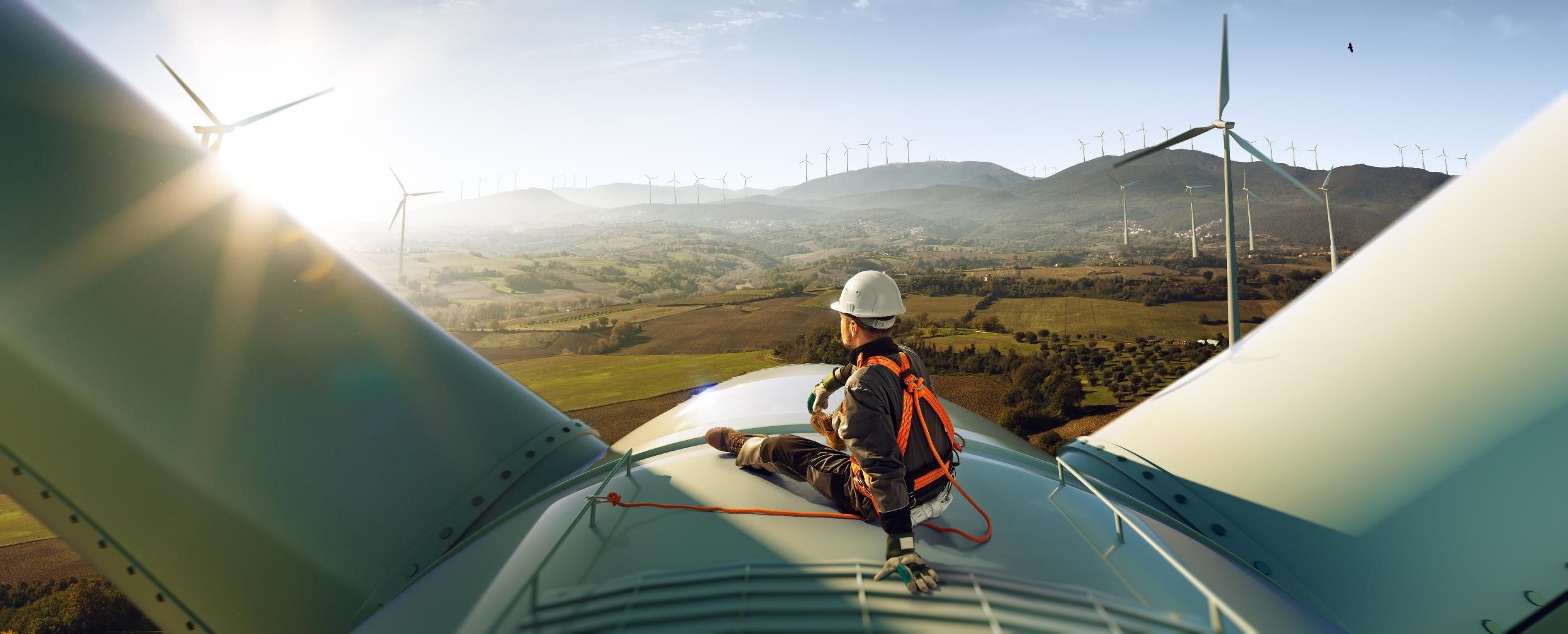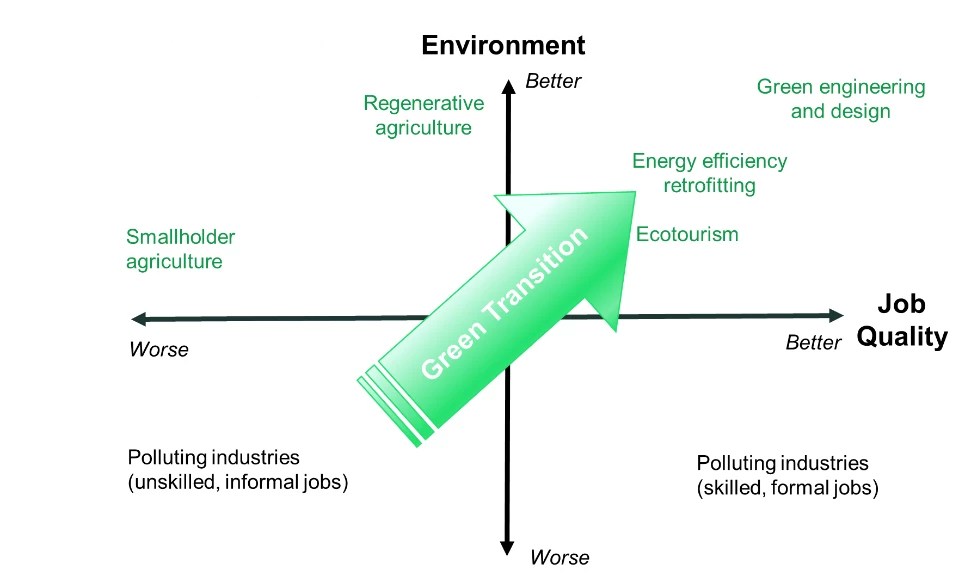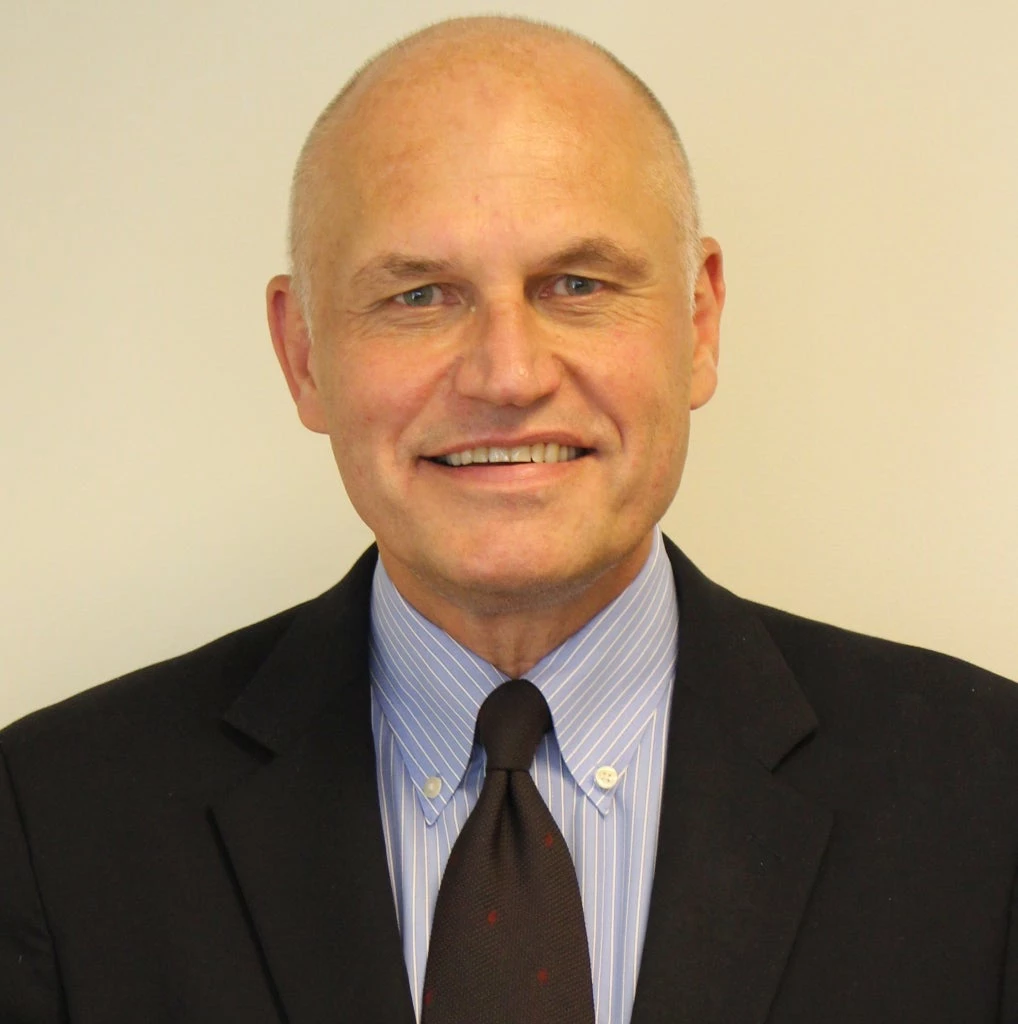 Engineer on top of a windmill
Engineer on top of a windmill
The world faces serious labor challenges. Even before the COVID-19 crisis, 2 billion people worldwide were working in the informal economy — reflecting the shortage of good quality jobs. Moreover, 250 million youth – mostly women – were Not in Employment, Education, or Training (NEETs). Rapid labor force growth will add another 600 million job seekers over the next decade, mainly in poor countries. Add the challenges of climate change, and the future appears grim.
The good news is that a “green transition” to economic activities with better environmental outcomes will create many opportunities to develop new industries that both benefit workers and protect the environment. Much recent research has focused on the potential benefits from technology-intensive green innovations and high-skilled green jobs. But there is scope for greener economic activity across a broad spectrum of sectors, involving unskilled as well as skilled workers in informal and formal jobs. A “green transition” in the labor market means making jobs better for the environment – that is, shifting to the upper quadrants of the graphic below.
What Governments Are Doing Right
Governments and non-governmental organizations are increasingly envisioning large-scale “green jobs” creation as integral to development plans. In a recent roundtable discussion at the World Bank Group-IMF Annual Meetings, panelists shared examples of innovative approaches for addressing this challenging agenda. Here are some examples of how countries are investing in people while also investing in the environment:
- South Korea’s Green New Deal reflects ambitious investments in moving toward a low carbon economy while generating hundreds of thousands of good, green jobs. It focuses on renewable energy and green infrastructure as well as industrial sectors. Its green car subsidy program offers up to US$17 million in subsidies to people buying electric cars in 2021 and up to US$33.5 million for hydrogen fuel-cell electric vehicles. Overall, the plan aims to create 1.9 million jobs by 2025.
- Morocco, a regional leader in green transition, is pioneering many initiatives in the rural economy space as well as in its export-oriented manufacturing sector. Agriculture represents 40 percent of the workforce, of which half are women. Morocco’s Generation Green 2020-2030 aims to create around 350,000 jobs in agriculture, fisheries, and other related areas, mainly for younger people.
- Rwanda has implemented a range of programs supporting land restoration, eco-tourism, and climate-smart agriculture. Its integrated approach to managing landscapes — covering cropland, livestock, forests, and fisheries — addresses the interlinked challenges of marginal rural livelihoods and accelerating climate change. Using sustainable land husbandry approaches in the context of hillside farming, the country has increased agricultural productivity in targeted irrigated areas by a factor of 10, productivity in targeted non-irrigated areas increased fivefold, erosion and sediment yield declined significantly, and the share of agricultural products brought to market doubled.
- In Bangladesh, there are more than 5,000 operating brick kilns, contributing about 1 percent to the country’s gross domestic product and employing an estimated one million people. The government is promoting improved environmental management and working conditions through specific initiatives that support green transition from traditional highly polluting fired brick kilns to a cleaner production process that creates better quality jobs.
- The World Bank supports governments across Sub-Saharan Africa through green public works programs that build resilience through temporary jobs for some of the poorest households. Nature-based public works schemes have been effective at reducing food insecurity and income vulnerability by providing economic opportunities and building resilience at the same time.
- The Bank’s support to ecotourism sector in Cambodia helps workers currently employed in illegal logging to move into better work opportunities in ecotourism. Protected areas have been established to protect natural capital, complemented by strengthened regulation and capacity building for enforcement. Ecotourism is being promoted in high-potential areas, including through training and investments in light and heavy infrastructure. In areas with less ecotourism potential, communities will receive support, technical assistance, and training to broaden livelihood opportunities in climate-friendly production techniques and improve access to markets. Overall, about 25,000 people living in the local forest communities will benefit from the economic opportunities sustained through the project.
NGO Efforts
Civil society organizations play a crucial role, too:
- The Rainforest Alliance protects forests around the world from agricultural expansion, illegal logging, and mining, as well as from fires, by working with communities that live in and around forests to build more sustainable, rural economies that generate better jobs and higher incomes.
- In Guatemala’s Maya Biosphere Reserve, 11 forestry concessions safeguard around 500,000 hectares of the largest and most important tropical forest north of the Amazon. These community-run concessions have achieved a near-zero deforestation rate since 2004.
These initiatives are just a few examples of how nations and civil society can contribute to a better economy and environment for all. But the work requires commitment from multiple stakeholders. An inclusive approach will greatly increase the prospects for achieving a sustained and sustainable recovery. We need integrated solutions that address the jobs crisis and shift course toward sustainable economic production that generates better-quality jobs and helps address the challenges posed by climate change.




Join the Conversation